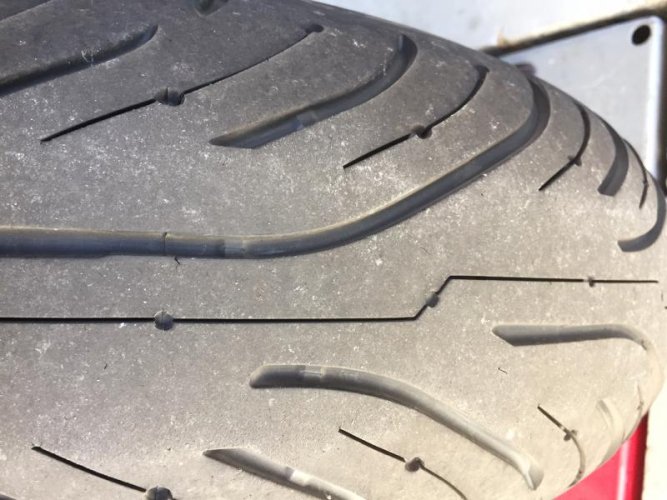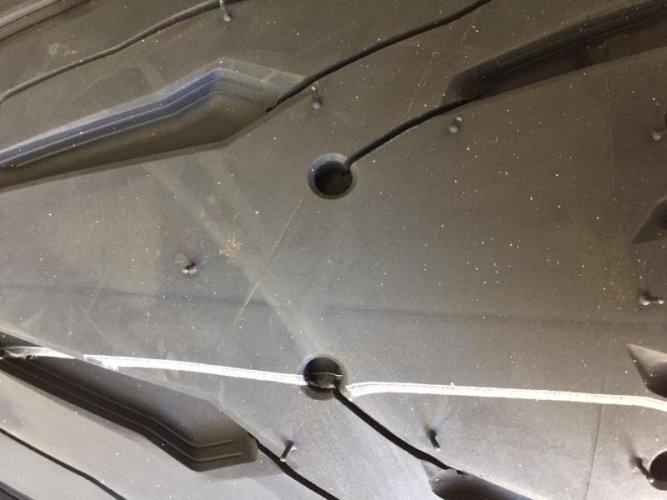lee
Debbie's Servant
The original Metzeler Z8 that came with my RT had a darker band as a wear indicator.
Most tires have a silver stripe as a wear indicator
Follow along with the video below to see how to install our site as a web app on your home screen.
Note: This feature may not be available in some browsers.
The original Metzeler Z8 that came with my RT had a darker band as a wear indicator.


while not exactly in the center of the tread they are pretty damn close....
You'll get the silver stripe indicator first.
Most tires have a silver stripe as a wear indicator
Should I replace these?
Is this a serious question?
Seems to be typical of tires that use two tread compounds. My front tires have been kept at 40 psi to reduce cupping, so not under-inflated. The "step" develops at the transition between the center tread compound and the softer side compound.
It looks like a lot of miles underinflated to me.
Jim, IMHO, you should probably stick to the recommended pressures for the bike you're putting the tires on. 34 psi isn't too far off for the front tire, but way under-inflated for the rear. Everything I've seen says the front should be at 36 psi and the rear at 42 psi. I've seen only one tire manufacturer recommend 40 psi for the rear on my bike....Around town I'm at about 34 lbs psi for both, and with loaded bags for a long trip, 25 lbs x 2, and 35 lbs x 1, it was suggested I take both tires up to 40 lbs psi for both.
Softer sidewalls are just about my only explanation for the unusual tread wear. ...Jim